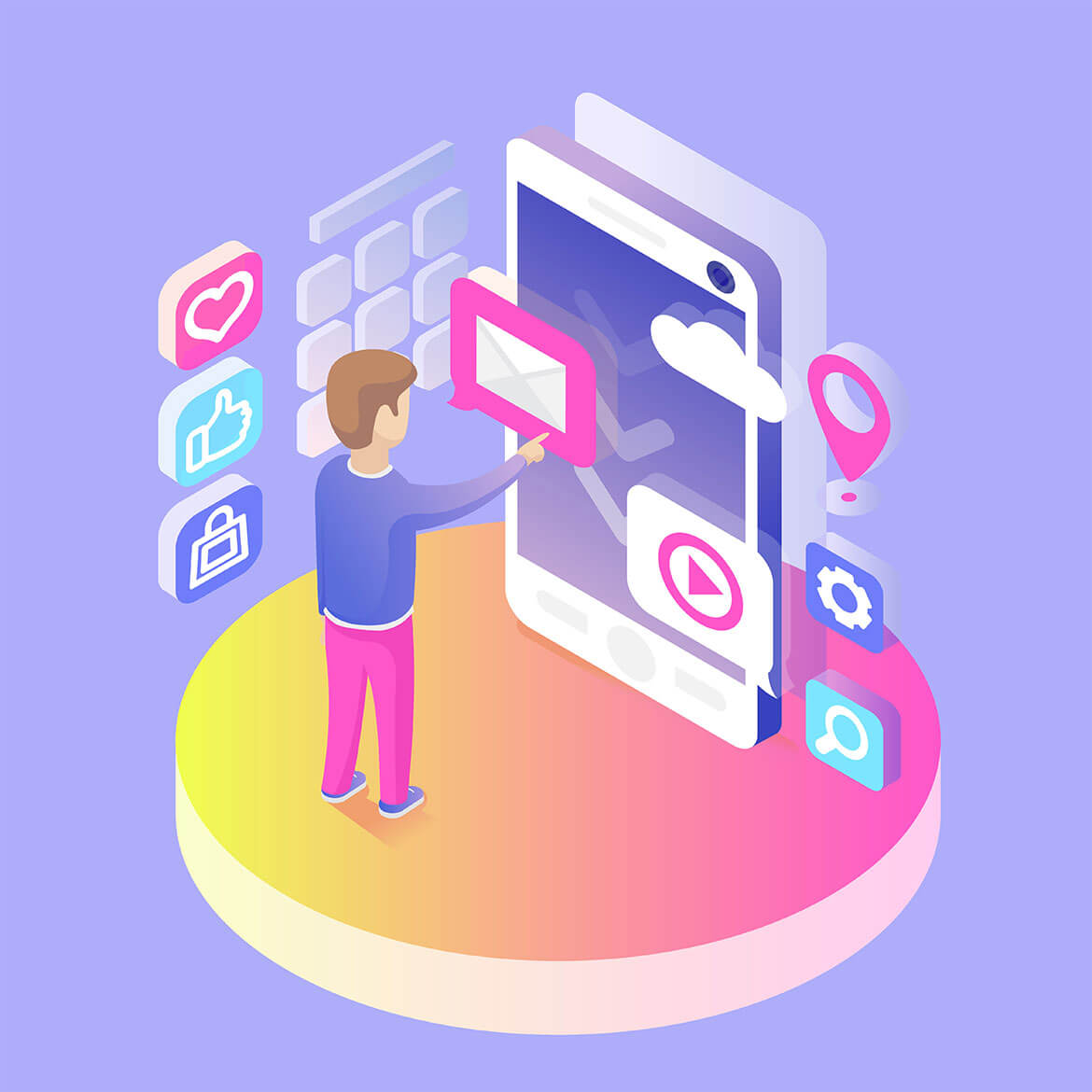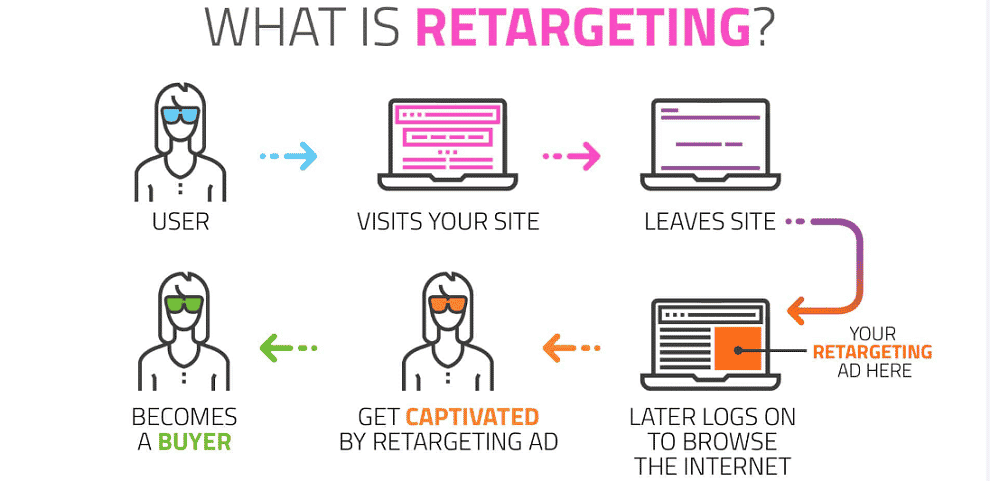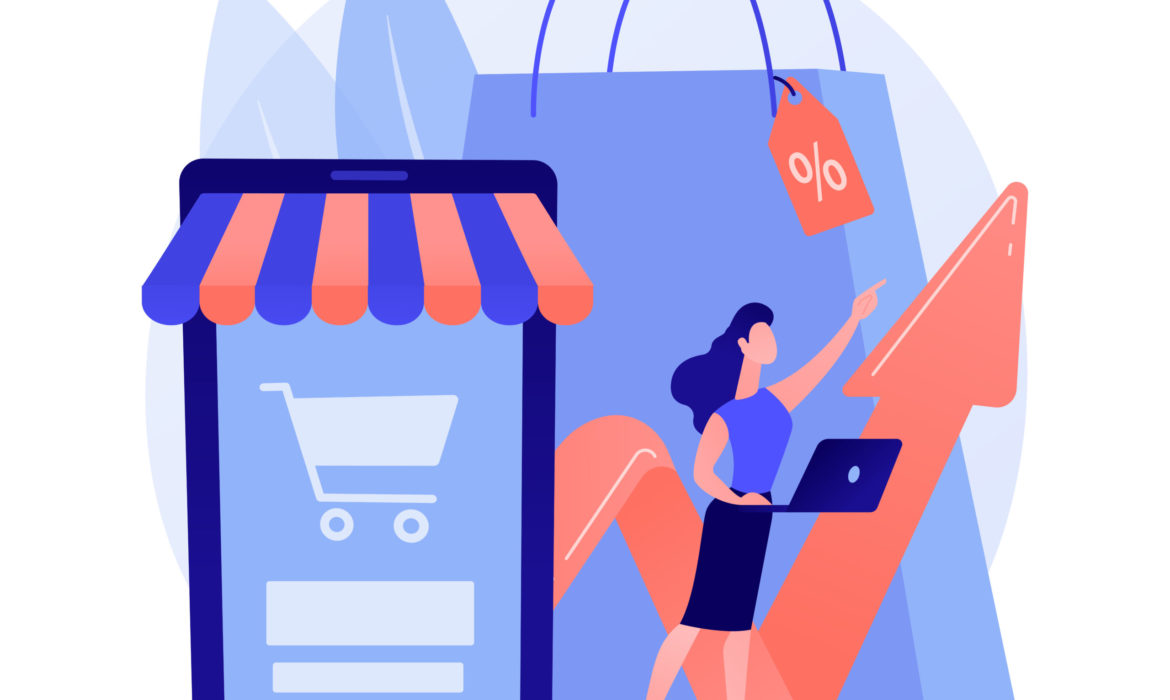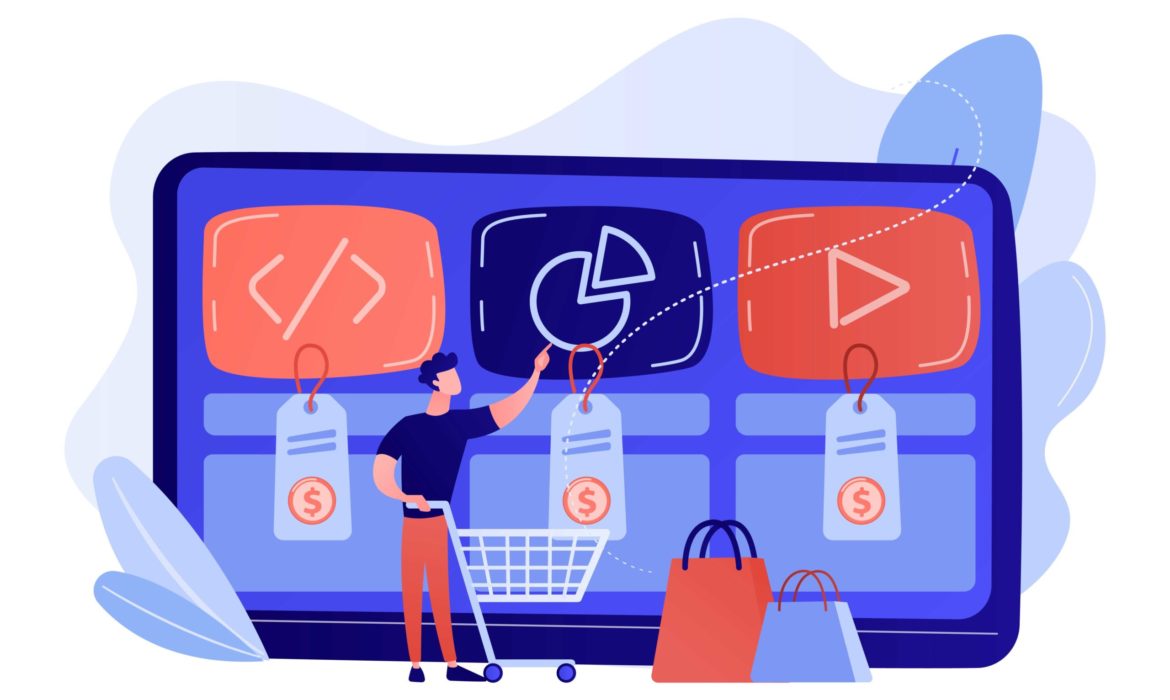Looking for a manager to hold your store? one of the additional services that iPlugn offers is to help you hiring a store manager from one of the experts in iPlugn team. contact us to learn more.
Online Store Manager Daily Tasks
The online store manager is one of the important bases in any store. Certainly every store needs a manager, including online stores. His role is important to increase sales and directing the marketing process, in such a place many tasks have to be done.
Below are some main tasks are common between store mangers regardless the type of the online business.
- New day is a new task that has to be planned and implemented.
- Orders are set to be processed in the typical fastest way.
- Stay informed by the customer service and solve any problem the customer could face or offer the best alternative solution.
- Keep in contact with the team members to manage, or solve any problem.
- Use e-marketing channels such as social media & search engine optimization ”SEO”.
- Keep in mind to stay alert to issues such as price changing, design development, and new products adding.
- Since online stores are available 24 hours in a day, the online store manager must always respond to emails and phone messages from both clients and suppliers.
- Is responsible to attract new customers in different ways as submitting offers that attract attention.
- Evaluate what has been done at the end of the day for improvement.
The online store manager work is similar to the regular manager but without dedicated direct communication with customers, which pays them to be careful and caring to their online website, avoiding problems and being clear.
What is Retargeting in Marketing
97% of people leave your site without buying anything on their first visit. Retargeting’s goal is to bring them back for more than one visit and drive them to buy from your products.
As for someone deciding to buy your products, the product has to be familiar and to make him feel familiar with the products, statistics say that to make up somebody’s mind and make him purchase, at least he has to see or hear the product for 7 times. Here re-targeting plays the main role which is to reach back the audience who showed interest in the products.
According to Google, combining retargeting ads with the other advertising you already do can help you sell 50% more stuff.
Target of Retargeting
- Reach back audiences that visited your site before (use meta pixels)
- Engage people you reached back and target who are most likely to purchase
- Build good connection with customers through brand awareness and recognition.
Using iPlugn store you can add Facebook pixels to your store.


How does it work
Use Google Display Network which can reach more than 90% of people on the internet using more than 2 million websites through display ads.
Once the visitor browses your site, they will start to see your ads everywhere, while reading an article, visiting an online store, or even while listening to music.
Using Google Display Network, of course the visitor will see after his first visit more than seven ads in different places unless he will not use his telephone anymore, and the ads will show only the cool stuff that will attract back the visitor and achieve the target of Retargeting.

Importance of Retargeting
- Retargeting is a process that acts as a reminder for customers who have desires
to purchase your products, which encourages them to come back and seal the deal. - Retargeting increases your brand awareness in the digital marketplace.
- Retargeting brings back 1 in 4 consumers to complete purchase.
- It keeps costs down, retargeting costs less than grabbing new customers.
- Improves customer lifetime value.
Retargeting is a main process in marketing, same as remarketing, you have to exploit any chance with any customer and encourage him to purchase. For most websites, only 2% of web traffic converts on the first visit. Retargeting is a tool designed to help companies reach the 98% of users who don’t convert right away.
9 tips to increase sales on your online store
After COVID-19, online shopping stood out and showed the significance and difference from physical shopping, which prompted all businesses to look after online stores to have online sales, and those are some tips to increase and improve sales for any online store.
1. Understand Customers Target
To make the right decisions about your products and marketing activities, you need to understand your customers. When your customers are online, you have to be attentive to what they need and search for.


2. Find Unique Selling Proposition
What makes you different from others, in your store, products, and the handling way.
You can include it in your tagline, use it in a remarkable way, spread it on social media, and feature it in your email marketing.
3. Value Customers Experience
Present the easiest way for customers to find what they are looking for and then buy it.
Look where they stumble or make missteps. When you create your online store with iPlugn, you are able to receive a user experience audit and improve it in order to save your customer experience.
4. Focus on Servicing Customers
Add a contact page on your website that makes customers easily contact you. Include a phone number, email address, and chat link if you have one. To help people get answers right in an indirect way, add an FAQ “Frequently Asked Questions “page to your website.
Most importantly, when customers contact you, respond instantly.
5. Make it Easy for Your Customers
Offer a guest checkout option so it is easier for customers to buy without filling in long forms. Break up the checkout into multiple pages or an expanding page to keep from overwhelming the customer with buyer information fields. Keep the text short and brief. Use standard buttons and shortened, such as a “Buy” button and a shopping cart icon.
If you are using iPlugn store, choose the template that suites your store to give better experience for your customers.
6. Create Content for Your Products
Instead of writing about your products, add common challenges or ways to use your products, advantages and effectiveness.
Example, if you sell children toys, talk about the advantages of a child after having fun playing with his parents.
7. Use high quality photos and designs to show your products
Photos are important. If possible, invest in a professional photographer to show your product features using high quality photos and designs.
contact iPlugn and benefit from the additional services they offer related to branding, graphics, creativity and design.
8. Keep Shipping Costs as Low as Possible
Sometimes, when the product is cheap the shipping cost may be 100% of the product price or more which will regress the buying process.
9. Show the product value in the top
Instead of having the price on the top of the product which the customer will see first, and may affect his/her decision, let the customer read first about the product features, value, and quality which will not make the price the main reason in the customer decision.
what is the difference between brand. logo, and identity ?
The first step for launching E-commerce or online business is by start branding your store and defining the identity and logo of this store or online services There is a common misconception that “logo design” and “branding” are synonymous even for e-commerce experts. When we first enter the world of business, we believe we understand how things work. Unfortunately, most freelancers and small business owners react with the same question: “Isn’t a logo and a brand the same thing?” when asked, “What’s the difference between a logo and a brand?”
what is a logo?
A logo is a graphic symbol that simply identifies a business, a commercial product, or any other public or private agency. It’s a SMART visual representation of a brand in a short amount of time. Also, it is mainly composed of typographies, graphics/symbols, and colors in most cases. It’s a graphic element that’s part of a company’s visual identity.
Logos are commonly employed in a variety of media, including commercial, industrial, political, and cultural settings. We can tell that it relates to a company, a shop, or many small businesses by using a symbol or an icon.
The process of creating a logo is known as logo design.
- A logo is an important part of any business’s design.
- The logo is targeted, relying on its uniqueness to set the organization apart from the competition and inspire support for its beliefs.
- It identifies the business it represents.
- It ensures consistency across all communication channels.
- It sets your company out from the competitors.
- It promotes a professional image while also raising expectations.


what is a brand?
A brand is a name given to a product or service that gives it a distinct identity. Everything behind the institution, as well as everything it owns and produces, must match the company’s overall ideals and objectives.
A brand is an idea or picture that comes to mind when people think about a company’s specific products, services, and activities, both practically and emotionally.
It can produce and stand for loyalty, trust, faith, premium, or mass-market appeal depending on how the brand is marketed, advertised and pushed. When making a purchase, one of the most crucial factors to consider is the brand. It is a technique devised by businesses to assist customers in immediately recognizing their products and organizations, as well as to provide them a reason to prefer their products over those of competitors.
- Brand is a constant tone or visual voice that represents a company’s competitive advantages and market position.
- Is a one-of-a-kind, powerful, and interesting identity.
- Can respond quickly to shifting consumer preferences by adjusting and following them.
- Great brands have a distinct personality and place in the hearts and minds of people who.
- owe loyalty to them, such as customers, employees, investors, and others.
Finally, the logo is a graphic element that represents a brand, but a brand is the combination of a company’s direct and indirect features. While each plays a different role in forming a presumed image of a company or product, businesses that respect their audiences are irreplaceable to either. While one represents the company as a whole (values, objectives, etc.) and the other defines the company through a graphic element, The difference between a brand and a logo is that they are both essential parts of any respected and reliable business.
iPlugn, additional added services includes logo design, brand identity and other main services to help you improve your e-commerce, visit https://iplugn.com or contact us at contact@iplugn.com for more information.
15 common problems for online business
The 15 Most Common Online Shopping Issues Why Online Shoppers Don’t Buy from a Website:
- Having a Poor On-site Search Engine
- design that is unprofessional and outmoded
- User Experience Difficulties
- Personalization is missing
- Product information that is either missing or unclear
- Sales copy is poor or non-persuasive
- Product reviews that are either missing or fake
- The check-out process is too complicated
- Errors to pay (and uncertainty)
- Leaks of personal information due to the absence of security
- Additional fees may apply
- Tracking, shipping, and late deliveries all are poor
- Not having a refund policy that is adjustable
- There is no live chat access or assistance
iPlugn simplifies things by offering solutions to the mentioned issues.
i. Not having a refund policy that is adjustable
s. The administrator of the iPlugn business is always willing to update and implement the refundable policy you require to make things easier for you.
i. There is no live chat access or assistance
s. iPlugn provides 5+ chatbot services that can be integrated into your website to assist you to solve the live chat access issue.
i. Product information that is either missing or unclear
s. You must clearly explain your products/items. This means you need to provide us with the missing information so that we can solve your problem.
i. User Experience Difficulties
s. All themes used in iplugn are user-friendly tested and improved annually by experts
i. Having a Poor On-site Search Engine
s.You can activate all SEO inquiries with the iPlugn plus plan to enrich your insights. check packages iplugn.com/packages/
i. Design that is unprofessional and outmoded
s. With the iplugn store builder, you may design your store and strengthen your brand, or you can utilize certain themes and personalize it professionally.
i. Tracking, shipping, and late deliveries all are poor
s. As a client, you can stay up to date with status updates, and as a store owner, you can update the order status.
Iplugn gives you a better experience in order to maximize sales volume, and it all comes down to thinking like your customers.You won’t have to work hard to find the statistics for your own website; with just a little effort, you’ll have a clear picture of their wants, difficulties, and expectations.
How to sell products online?
Many people nowadays are interested in learning how to sell products online. Here are some tips to help you get started with your online business.
Step-by-step instructions on how to sell products online
There’s no better time than now to create your own internet store and sell products. Retail sales through eCommerce websites would expand at a 7.8% average rate (CAGR 2020-2024), resulting in a market volume of $3.1 trillion in 2024, according to global study.
Every day, the online competition gets tougher. That is why many people never consider starting an eCommerce store or company. Despite the tough competition, you can still get your cut of the pie. It all comes down to the approach you employ when deciding what to sell online. Here are the steps to help you expand your e-commerce business.
Finding Products to Sell Online
On the internet, you can sell a wide range of things. If you don’t take the time to research your options ahead of time, you’ll fail. Ecommerce platforms such as Amazon are used to buy commodities. Etsy is known for custom-made, one-of-a-kind, and one-of-a-kind items. These are unique products.
If you plan and promote properly, you may create a brand that can sell a mix of the two. You’ll face difficulties in accessing attention if you exclusively sell goods that can be found on large marketplaces. You won’t be able to compete on pricing since the eCommerce powerhouses can purchase products.
IT MIGHT BE CHALLENGING TO COME UP WITH CREATIVE ITEMS ON YOUR OWN. THAT DOESN’T DECREASE THE CHANCE OF SELLING OTHER PEOPLE’S GOODS.


Select an e-commerce platform
Locate the item and look for a spot to sell it. That involves deciding on the best e-commerce software for your online store. Choose the top online selling platforms and be certain to locate one that matches your requirements. Set your budget, review sites, and choose a platform that is simple to use. Confirm that you have access to high-quality integrations and add-ons, as well as inventory and analytics solutions.

Register a domain name
The next step is to obtain a custom domain name. Customers will recognize your website by its domain name, and you will be able to set up payment systems using it. This service may be included in your e-commerce software, or you may buy a domain name from a domain registrar or hosting company.
Choose a simple and easy-to-type domain name. After all, you want new clients to have a simple time finding your brand. Your domain name will be renewed every year.
iPlugn also offers free domain and hosting for your e-commerce website see more services iPlugn Services or contact to transfer your own domain
Design your website
Site design looks simple and clear and consumer when you follow the best e-commerce platforms. Use post templates to save time and effort while creating your store, then customize it as needed. Many services are available, like uploading your logo, selecting colors and fonts that best suit your project, and populating your website with pages and information.
The most critical part is your store. Keep your attention on the home page, the “About” section, and the FAQs, among other things. Including a blog on your website can help you increase traffic and make connections with customers who are interested in your industry.
one of the added value of iPlugn is that offers multiple themes for your website that suites different industries, also you can customize your own theme from the control panel which is easy and simple to use by anyone without the need of any css or coding skills.


Describe your products
When it comes to writing and SEO, don’t forget about product descriptions. Customers can’t touch, examine, or test out your things in an online store.
Buyers are interested in specific details such as features, weight, and measurements, among other things. High-resolution photos are also important. Include video trials or tutorials of your products if you want to get creative. starting from plus plan in iPlugn all SEO inquires are enabled
Describe your products
Remember that no matter how well-designed your online business is, if no one knows where to reach it, it will not sell items. Branding and promoting your online products is essential since it increases interest and attracts people to your website.
Follow email, social media, content marketing, and paid advertising strategies. Offer promotions such as discounts, vouchers, giveaways, and competitions. Marketing for an online store may be creative, unique, and exciting. Product advertising should be balanced with clients’ feelings and connections.
For example, pay or buy bloggers or companies to promote your brand and products on social media. Or book one of iplugn additional services which is Digital Marketing and strategist.
Google Merchant and Why You Must Use it
What is google merchant?
Google Merchant Center helps you get your shop and product info into Google and make it available to shoppers across Google.
That means that everything about your shops and products is available to customers when they search on a Google property.
Without Google Merchant Center (GMC), your products will not appear on Google Shopping. Also, you cannot create Product Ads unless you add sufficient product information to your GMC account.
Benefits:
The Merchant Center account entails one major benefit: it is a gateway to advertising your products with Google Shopping. Also, It allows you to store essential product information needed to generate and serve your product ads to potential customers.
Without google merchant center (GMC) the products will not appear on google. Although, you cannot create product ads unless you add sufficient products.
- You can market your products
- Data feed can be obtained on google merchant
- Google Merchant can be connected with Google Ads account
- You can add country to focus sales on, and can grab special customers “from the country”
- It could take the shape of an ad


Steps to create merchant account:
- Sign up for Google Merchant Center
- Choose where your customers check out
- Navigate Google Merchant Center
- Set up free product listing
- Set up Buy on Google
- Verify and claim your store’s website
- Submit your product data
- Follow Merchant Center guidelines
Using Google Merchant to present your ads, is the best way, since you are working with Google itself to share ads on Google.
If your store was built using iplugn software you can integrate it with google merchant and benefit from it.
20 Idea to Promote Your store on instagram
From the idea to let people share their personal lives with others through photos and videos, INSTAGRAM was developed to play a main role in the e-commerce world as a branch of social media, specifically “meta”, to include marketing, and selling products. As an example, brands can create their business profile on Instagram, then grow their followers, to promote their products and have online stores on this platform.
Here is some ideas to promote your store on Instagram:
- Switch to a business account
- Turn on shopping features existing on Instagram
- Create your own hashtags, grow them to link any user to your products as a marketing process
- Use a small and easy username to be engaged with people
- Create a profile photo that grabs attention including logo if available
- Spread links that are an easy way to any user to reach the store
- Use photos, videos, and reals “reals is spreader faster than others” to present your products
- Photograph professional photos and videos with high quality, and in a way that shows your products in action
- Add a complete ordering process without leaving the Instagram app
- upload your product catalog, use the catalog manager. iPlugn store enables you to integrate you Facebook and Instagram shop to the website.
- Add tags to your posts that shows the product name & price
- Add shopping Sticker to your stories as an easy link to your store
- Cooperate with influencers and creators to promote your products
- Present your products with live shopping to gain trust
- Boost your posts
- Try to verify your Instagram business account
- Exploit trends in a way that fits your products
- Operate giveaways to gain more followers and to publish your products
- Observe your Instagram insights and exploit the results
- Link Instagram with other platforms, then it is possible to gain common followers


Instagram shopping statistics like 83% of users discover new services and products, 81% do their research to find products or services, and 80% decide if they want to buy a service or a product right from the Instagram platform show how popular ecommerce is on Instagram.

Best Practices for Crafting Compelling Product Descriptions.
When it comes to selling products online, compelling product descriptions play a crucial role in capturing customers’ attention and driving conversions.
A well-crafted product description can highlight the benefits, unique features, and value of your offering -this feature is available on iPlugn– enticing potential buyers to make a purchase.
In this blog post, we’ll explore 11 best practices for creating compelling product descriptions that will help you effectively market and sell your products.
Here are the 11 best practices:
Know your target audience
To create product descriptions that resonate with your customers, it’s important to understand their demographics, preferences, and needs.
Take the time to research your target audience thoroughly and tailor your descriptions to their interests and language.
Speak directly to their pain points and showcase how your product solves their problems.


Highlight benefits and unique selling points
Focus on communicating the value your product offers. Clearly outline the benefits and unique selling points that set your product apart from the competition.
Explain how your product can enhance customers’ lives or make their tasks easier. Show them why they need your product and how it will make a difference.

Use persuasive language
Make your product descriptions captivating by using descriptive and engaging language. Create a vivid picture in customers’ minds by incorporating sensory words.
Furthermore, leverage power words that evoke emotions and compel action. Persuasive language can greatly influence customers’ buying decisions.
Keep it concise and scannable
Online shoppers tend to skim through product descriptions, so it’s important to make them easy to digest.
Use short paragraphs, bullet points, and subheadings to break down information into easily scannable chunks. Highlight the most important details to capture attention quickly.
Customers should be able to grasp the essence of your product with just a quick glance.
Use high-quality visuals
Enhance your product descriptions with high-resolution images or videos that showcase the product from different angles.
Visuals help customers visualize the product and make an informed decision. Invest in professional product photography to present your offerings in the best light possible.


Include specific details
Provide accurate and comprehensive information about your product’s specifications, dimensions, materials, and other relevant details.
Customers appreciate transparency and want to make informed choices. Detailed descriptions also reduce the likelihood of returns or dissatisfied customers.
Incorporate social proof
Build trust and credibility by including customer reviews, ratings, or testimonials in your product descriptions.
Positive feedback from satisfied customers can greatly influence potential buyers and reinforce the quality and value of your product.
Consider showcasing social proof prominently to boost customer confidence.
Create a sense of urgency
Encourage customers to take immediate action by incorporating elements of urgency into your product descriptions.
Limited-time offers, discounts, or exclusive deals can create a sense of urgency and drive conversions.
Use phrases like “limited stock,” “today only,” or “while supplies last” to create a sense of urgency and motivate customers to make a purchase.
Optimize for search engines
Conduct keyword research to identify relevant terms customers use when searching for products like yours. Incorporate these keywords naturally into your product descriptions to improve search engine optimization (SEO) and increase your visibility in search results. Effective optimization can attract organic traffic and boost your sales.
Proofread and edit
Ensure that your product descriptions are free from grammatical errors, typos, and inconsistencies. Sloppy and unprofessional content can deter potential customers and harm your brand reputation.
Take the time to proofread and edit your descriptions meticulously before publishing them.
Consider using grammar and spell-checking tools for added accuracy.
Test and iterate
Constantly monitor the performance of your product descriptions and analyze key metrics such as click-through rates, conversion rates, and customer feedback.
Experiment with different approaches, headlines, or formats to optimize your descriptions over time.
Continuously refining and testing your product descriptions will lead to better results and increased sales.
Conclusion
Crafting compelling product descriptions is an art that requires a deep understanding of your target audience and the ability to communicate the unique value of your offerings effectively.
By implementing these 11 best practices, you’ll be well on your way to creating product descriptions that captivate customers, drive conversions, and ultimately help your business succeed in the competitive online marketplace.
Remember, constantly analyze and refine your descriptions to stay ahead of the curve and keep your customers engaged and motivated to make a purchase.
How to optimize product listings for better conversion rates?
To optimize product listings for better conversion rates in Arabic, you can follow these guidelines:
Accurate and Descriptive Titles
- Use concise and clear titles that include important keywords and highlight the key features or benefits of the product.
- Translate the titles accurately into Arabic while ensuring they are culturally relevant.
High-Quality Product Images
- Include high-resolution images that showcase the product from different angles.
- Use Arabic-speaking models or culturally appropriate visuals to resonate with the target audience.
- Ensure the images load quickly and are properly optimized for mobile devices.
Detailed Product Descriptions
- Provide comprehensive and accurate descriptions in Arabic that highlight the product’s features, specifications, and benefits.
- Focus on the aspects that are most important to the Arab market.
- Use bullet points and subheadings to make the information easy to scan.


Use Social Proof and Reviews
- Include customer reviews and ratings in Arabic to build trust and credibility.
- Encourage satisfied customers to leave reviews by offering incentives or discounts.
- Showcase any awards, certifications, or endorsements that your product has received.
Highlight Offers and Promotions
- Clearly display any discounts, special offers, or limited-time promotions.
- Use Arabic language and cultural references that resonate with the target audience.

Easy-to-Use Navigation
- Ensure the website or platform hosting the product listings has a user-friendly interface.
- Optimize for mobile devices, as mobile usage is prevalent in the Arab region.
- Make it easy for customers to find and compare products through filters and sorting options.
Clear Call-to-Action (CTA)
- Use compelling CTAs in Arabic that encourage users to take action, such as “Buy Now”, “Add to Cart”, or “Learn More”.
- Place the CTA prominently on the page, ensuring it stands out.
Multiple Payment Options
Offer a variety of payment methods commonly used in the Arab region, such as credit cards, debit cards, and popular e-wallets.
Responsive Customer Support
- Provide responsive customer support in Arabic, enabling customers to ask questions or seek assistance easily.
- Include contact information, live chat support, or chatbot options in Arabic.
Conclusion
Remember to continuously monitor and analyze your conversion rates, and make adjustments based on customer feedback and market trends.
Optimizing product listings is an ongoing process that requires testing, refinement, and adapting to the needs of your target audience.














